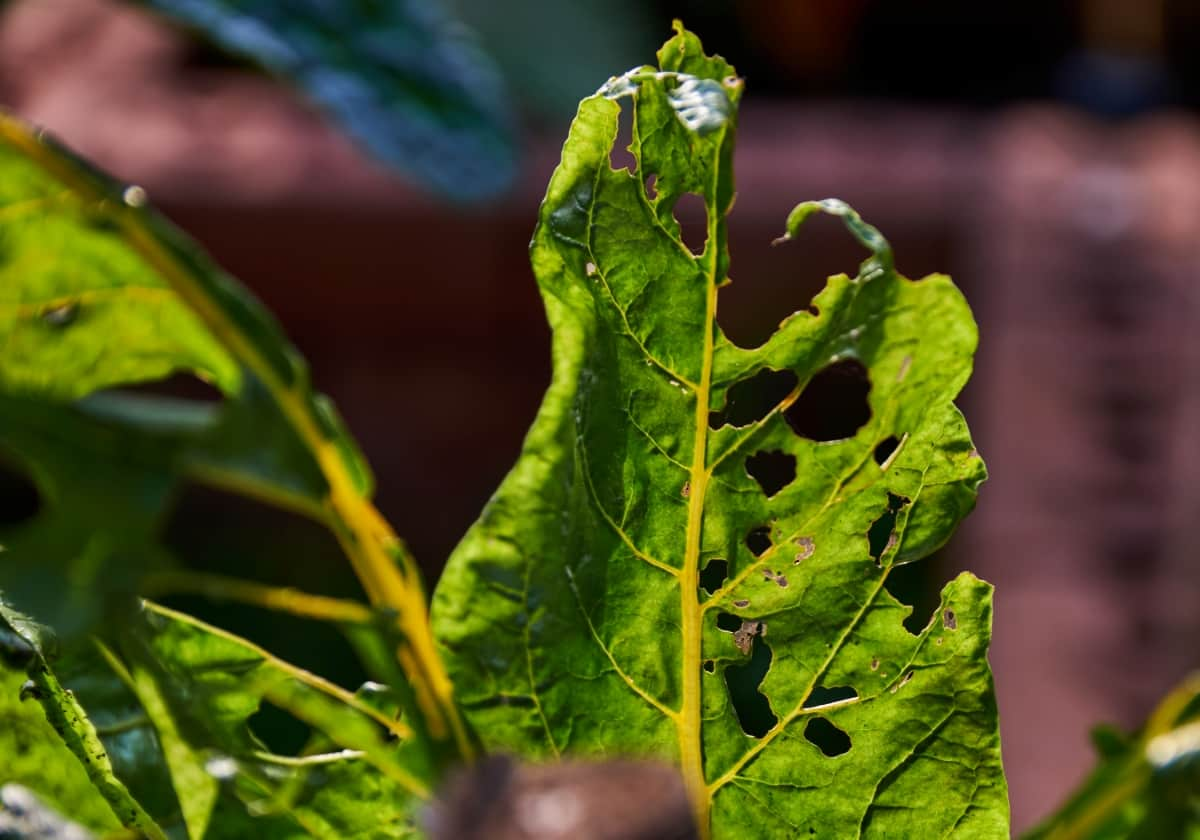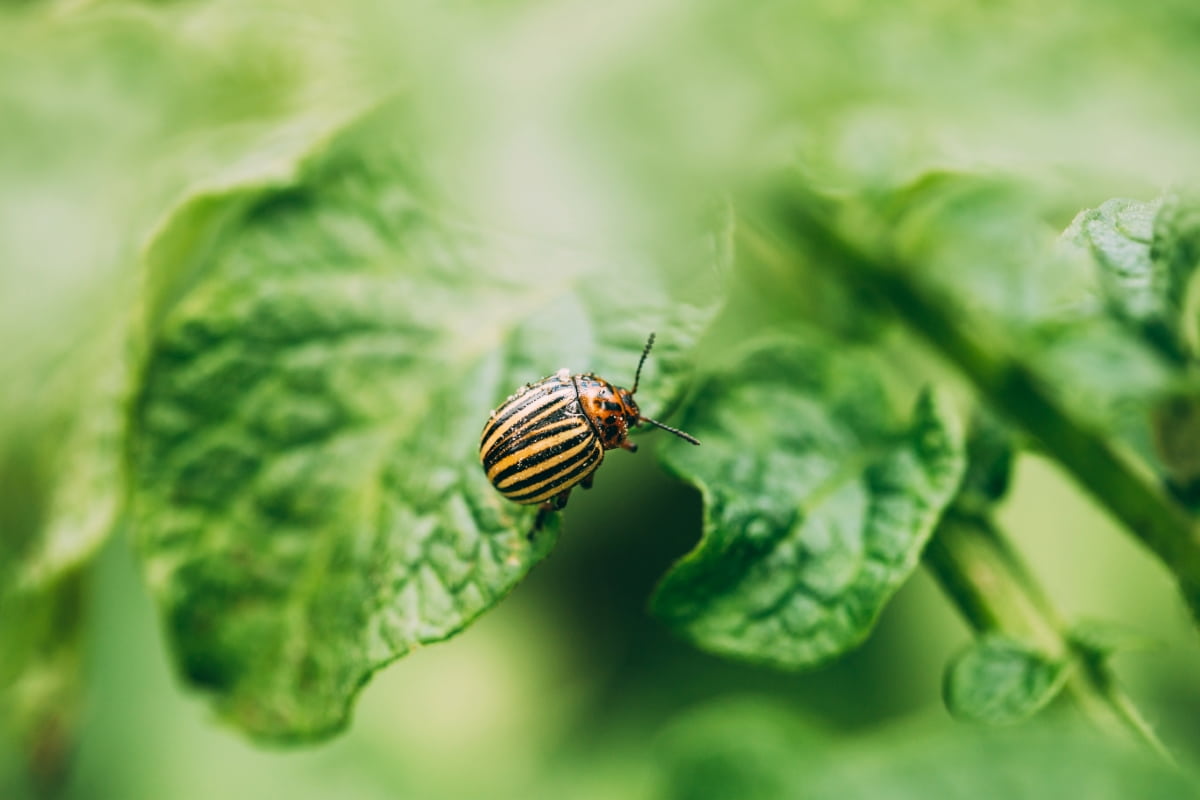Welcome to our blog on Common Vegetable Pests: Identification and Control Methods! Are you frustrated by pesky invaders wreaking havoc on your precious vegetable garden? Don’t worry; we’ve got you covered! In this informative guide, we’ll explore various pests that commonly afflict vegetable plants, such as aphids, tomato hornworms, cabbage worms, and slugs.

You’ll learn to identify these troublemakers and discover effective control methods to safeguard your crops. We’ll also delve into organic remedies, providing natural solutions for a healthier and pest-resistant vegetable garden.
Common Vegetable Pests Identification
What are Common Vegetable Pests?
Vegetable gardens are susceptible to various pests that can damage plants and reduce yields. Some common vegetable pests include aphids, tomato hornworms, cabbage worms, slugs, snails, whiteflies, cutworms, spider mites, beetles, thrips, leaf miners, and root-knot nematodes.
Aphids are small insects that suck plant sap, while tomato hornworms and cabbage worms are voracious eaters that can defoliate plants. Slugs and snails leave slime trails and devour leaves. Whiteflies are small, white insects that suck plant juices. Tomato blight causes leaf and fruit blight. Cutworms chew through stems near the soil line. Root-knot nematodes are microscopic worms that cause root damage.
Organic Remedies for Vegetable Garden Pests
Organic remedies refer to natural solutions or treatments derived from organic sources and used to address various issues, such as pest control, plant diseases, or soil improvement, in a manner that aligns with organic principles and sustainable practices. Natural and homemade insecticides can help protect your garden from harmful pests without harming the environment.
- Vegetable Oil Spray: Mix vegetable oil and mild soap with water to suffocate insects like aphids and mites.
- Soap Spray: Mix liquid soap with water to control mites, aphids, and beetles.
- Neem Oil Spray: Use neem oil, a natural insecticide, to disrupt the life cycle of insects and combat fungal infections.
- Diatomaceous Earth: Sprinkle this abrasive substance on plants or the ground to dehydrate and control crawling insects.
- Garlic Spray: Puree garlic with water and soap to repel or eliminate insects.
- Chile Pepper Spray: Create a spray from pepper powder or fresh peppers to repel various pests.
- All-in-One Homemade Spray: Combine garlic, onion, cayenne pepper, and soap for an all-purpose insecticide.
- Tomato Leaf Spray: Steep tomato leaves in water overnight and use the resulting solution to control aphids and insects.
Preventing and Treating Aphids in Vegetable Plants
Preventing and treating aphids in vegetable plants is needed to maintain a healthy garden. Aphids are small pear-shaped insects that can be black, gray, brown, pink, red, or green, with the pale green variant being common. They prefer young, tender leaves and secrete a sweet, sticky substance called “honeydew.”
- Spray with Water: Use a strong jet of water from a hose to remove the aphids from the plants. Ensure the water pressure is not strong enough to damage the leaves and spray the entire leaf surface.
- Introduce Natural Predators: Encourage beneficial insects like ladybugs, lacewings, parasitic wasps, and crab spiders into your garden, as they naturally prey on aphids. Consider purchasing ladybugs to release in your garden, but ensure suitable conditions to encourage them to stay.
- Use Cold-Pressed Neem Oil: Cold-pressed neem oil can be an effective organic solution. Apply it according to the instructions, as different types of neem oil may have varying effects.
- Use a Soap Spray Insecticide: Create your insecticide by mixing one teaspoon of liquid dish detergent, four teaspoons of vegetable oil, and two cups of water. Spray the solution on the affected plants, preferably in the morning or evening.
- Use Aphid Traps: Aphids are attracted to the color yellow. Use sticky traps or create your own by spreading petroleum jelly on the yellow poster board. Alternatively, use yellow plastic cups filled three-fourths with water and a drop of dish liquid to drown the aphids.
- Use Pesticide: As a last resort, chemical pesticides can be used. However, consider organic options and follow the instructions carefully to minimize harm to beneficial insects and the environment.
- Handpicking: Regularly inspect your plants and manually remove aphids by rubbing or squishing them. Be gentle to avoid damaging the leaves, and consider wearing gloves if you prefer.
In case you missed it: Maximizing Yields and Profit from Sweet Lime Sustainably: A Comprehensive Guide

Controlling Tomato Hornworm Infestations in the Garden
Tomato and tobacco hornworms are destructive pests that can cause significant damage to summer crops, including tomatoes, eggplants, peppers, and potatoes. These large caterpillars blend in with the foliage and feed continuously, resulting in chewed leaves and fruits.
Identification
- Tomato hornworms can grow up to 5 inches long and have a pale green body with white and black markings. They also have a horn-like protrusion at their rear.
- Look for chewed or missing leaves, dark green or black droppings on the top of tomato leaves, and wilted leaves hanging down as indicators of infestation.
- Tomato hornworms come from mottled brown-gray moths.
Damage
Signs of hornworm damage include large leaf holes, severe defoliation, devoured flowers, scarring on fruit surfaces, and potential sunscald on fruits due to reduced foliage cover.
Control and Prevention
- Handpicking is effective for small gardens. Drop the caterpillars into soapy water or feed them to chickens.
- Insecticides like Bt (Bacillus thuringiensis) can be used as a last resort. Ensure it’s approved for use in your area and reapplied after rain.
- Insecticidal soaps can kill hornworms but require direct contact.
- Encourage beneficial insects like wasps, ladybugs, and green lacewings that feed on hornworms. Avoid disturbing infected hornworms, allowing the wasps to complete their life cycle away from your crops.
Natural Solutions for Combating Cabbage Worms in Vegetables
Cabbage worms, or imported cabbage borer, are caterpillars that feed on cruciferous vegetables like cabbage, broccoli, Brussels sprouts, collard greens, kale, rutabaga, and turnips. These pests can cause severe damage if left unchecked. Identifying cabbage worms, They are light green with a faint yellow stripe along their back and additional yellow stripes across their body. They have velvety soft hairs and grow to about 1 inch in length. The life cycle of cabbage worms consists of four stages: egg, larva, pupa, and adult. The entire cycle can take between 3 and 6 weeks, depending on the weather conditions.
- Handpick cabbage worms and eggs. Fill a bucket with hot water, dish soap, or vinegar. Pick out worms and eggs on leaf undersides with gardening gloves.
- Bacillus thuringiensis (Bt): Bt naturally kills cabbage worms and other caterpillars. Spray or sprinkle Bt on cabbage worm-damaged leaves. It paralyzes their digestive system, making them cease eating and die within days. It is harmless for humans, pets, beneficial insects, and plants.
- Neem oil, from the Azadirachta indica tree, is a natural repellant. It deters cabbage worms from your garden without killing them. To deter cabbage worms, spray neem oil on plant leaves and bases.
- Floating row coverings prevent plant access. After planting, cover cabbage, broccoli, kale, cauliflower, and other brassicas with these covers. The covers let plants get sunlight and water while keeping cabbage worms out.
- Natural cabbage worm predators: Invite birds and helpful insects to your garden. Marigolds planted with cabbage attract these predators and suppress cabbage worms.
In case you missed it: Star Anise Cultivation in India: A Step-by-Step Growing Guide for Beginners

Effective Ways to Manage Slugs and Snails in the Vegetable Patch
Slugs and snails, terrestrial gastropod mollusks, are common worldwide in temperate and humid environments. Slugs lack shells, making them more prone to desiccation, while snails have better protection. They move slowly using muscular contractions, covering up to 40 feet per night in search of food. The irregularly shaped holes can identify slugs and snails with smooth edges they leave on larger leaves and the slimy mucus they deposit on plants and soil.
- Remove hiding spots by clearing objects in direct contact with the soil, including leaves, rocks, and debris. Avoid using wood chip mulch and elevate flower pots and garden decor.
- Encourage natural predators like birds, ducks, chickens, ground beetles, ants, fireflies, marsh flies, reptiles, amphibians, and snakes by providing bird baths, native plants, bug hotels, and marshy water features.
- Keep the topsoil dry by watering in the morning, targeting each plant’s base with a drip irrigation system, and avoiding excessive watering.
- Handpick slugs and snails at night, dislodging them from plants and disposing them in soapy water or compost.
- Use traps such as cardboard or wooden boards flipped daily, deep holes covered with cardboard, or flower pots filled with stale beer to lure and trap slugs and snails.
- Utilize copper deterrents, such as copper flashing rings around individual plants or copper tape along larger plots’ perimeter to repel slugs and snails.
- Deploy garden cloches and bell-shaped plant covers to protect vulnerable seedlings from slugs and snails while providing frost and weather protection.
Preventing and Controlling Whiteflies on Vegetable Plants
Whiteflies are a family of pests closely related to aphids and mealybugs, with approximately 1,500 known species worldwide. They are easily recognized due to their habit of fluttering up in a cloud when disturbed. These sap-sucking insects feed on the underside of leaves, causing damage such as speckling, yellowing, and necrosis, ultimately reducing plant yield. Some species of whiteflies also transmit viruses that lead to plant diseases affecting important crops like tomatoes, cassava, soybeans, and cotton.
Controlling whiteflies can be challenging as they secrete honeydew, attracting ants and promoting the growth of sooty mold that interferes with beneficial insects. Disruptions in natural biological controls often cause outbreaks and are more common in warm weather or dusty conditions. Identifying whitefly species can be difficult, but closely examining the pupal case or wing angle can help differentiate them. Monitoring populations through visual inspection and sticky cards prevent and controls whitefly infestations.
Organic Methods
- Thorough plant inspections.
- Removal of infested leaves.
- Using water jets to dislodge pests.
- Controlling ants.
- Managing weeds.
- Maintaining plant health.
- Attracting natural predators like lacewings and predatory bugs.
Integrated pest management techniques combining these methods offer effective control while minimizing reliance on pesticides.
In case you missed it: Ultimate Guide to Greenhouse Irrigation and Water Management

Managing Cutworms Caterpillar and Their Damage in Vegetable Beds
Cutworms, such as the black cutworm (Agrotis ipsilon), are a common early-season pest cause significant damage to vegetable crops. Cutworms sever plants at the soil line. Black cutworm larvae are muscular caterpillars with rough skin that grow 2″ long. Variegated cutworms range in color from brownish/gray to grayish/black and have yellow-white spots and a dark “W” mark on their 8th abdominal segment.
More cutworm moths from the south arrive in the spring. Adult moths that feed on nectar lay their eggs on plants. Night-feeding larvae begin consuming plants in early May. They cut or pluck young subterranean plants. Roots, tubers, fruits, and leaves are all consumed by cutworms. Track cutworm activity by looking for seedlings that disappear at night.
Cultivate the soil in the spring or fall to prevent overwintering sites, and utilize larger transplants and pre-sprout seeds. Floating row covers and protective collars inhibit egg-laying and larvae. Cutworms are discouraged by using crushed oyster shells, sand, or diatomaceous earth around plant stems. Handpicking and destroying larvae, as well as treating early larvae with Bt, can also be effective.
Natural Ways to Combat Spider Mites in Vegetable Plants
Spider mites, which resemble tiny white, red, tan, or black spiders, can be challenging to spot as they are only about 1 mm long. Webbing is often the first sign of their presence. These arachnids have oval-shaped bodies and eight legs, similar to spiders. They prefer the underside of leaves and thrive in hot, dry conditions. The life cycle of a spider mite involves eggs, larvae, and adults, with a female capable of producing hundreds of eggs during her lifetime.
In case you missed it: Mastering the Art of Grafting Techniques for Grape Vine

Spider mite infestations can cause extensive plant damage, leading to leaf discoloration, stippling, curling, and even death. Spider mites can be introduced through contaminated plants, unsterile potting soil, or by hitching a ride on clothing or pets. Natural methods to combat spider mites include pruning affected leaves, showering plants to dislodge mites, using soap sprays, applying neem oil, utilizing apple cider vinegar sprays, employing rosemary oil sprays, or using rubbing alcohol to kill them on contact.
Preventing and Controlling Root Knot Nematodes in Vegetable Gardens
Root-knot nematodes, especially Meloidogyne incognito, threaten North Carolina’s commercial farms, greenhouses, and home garden crops. These microscopic roundworms penetrate plant roots, creating “knotty” galls and withering and stunted growth. Root-knot nematodes attack tomato, pepper, cucumber, squash, eggplant, and okra in late spring, summer, and fall when soil temperatures are 70–85°F.
Several methods can prevent and control root-knot nematodes. Crop rotation, where sensitive crops are rotated annually, is cost-efficient and effective. Succession planting or multiple cropping within the rotational design maximizes garden space and reduces nematode damage. Rotation and planting nematode-resistant veggies decrease populations. Cultural practices help reduce nematode damage.
Removing crop roots after harvest and tilling the soil often reduces nematode populations. Fall tilling and cover crops like annual ryegrass, rye, or wheat prevent nematodes. Optimal pH, fertility, and moisture improve plant tolerance to nematodes and other stressors. Composting leaves, grass clippings, and manure enhance soil structure, moisture retention, and nematode control. Organic compounds may require nitrogen. Nematode-free plants and soil and solar heating are other inexpensive methods. In midsummer, soil can be solarized or oven-heated to 140°F.
Preventing and Controlling Leaf Miners in Vegetable Gardens
Leaf miners, usually fly, moth, or beetle larvae, feed on plant leaves’ inner tissues. As they feed, they leave tunnels or mines in the leaves, which can injure the plants and impair their appearance. Tomatoes, lettuce, spinach, and cabbage are prone to leaf miners’ attacks. Their leaf patterns are twisting.
- Implement good garden hygiene practices by removing infested leaves and weeds.
- Use floating row covers to physically block adult leaf miners from laying eggs on plants.
- Apply sticky traps around the garden to capture adult leaf miners.
- Use beneficial insects like parasitic wasps and predatory beetles to naturally control leaf-miner populations.
- Consider using organic insecticides containing spinosad or azadirachtin, which are effective against leaf miners.
Natural Ways to Combat Thrips Attack in Vegetable Plants
Thrips challenge gardeners due to their elusive nature and damage resembling nutritional or disease issues. These pests affect a wide range of plants and are highly resilient. Measuring 1/25 inch in length, thrips have a slender body and cause damage by extracting plant juices. Over 6,000 species of thrips exist, with more than 200 identified as problematic for plants.
In case you missed it: From Expenses to Earnings: A Comprehensive Goat Farming Cost and Profitability Analysis

Identification can be challenging, but using sticky traps can help. To combat thrips, gardeners can employ integrated pest management, pruning, water sprays, encourage natural predators, dust bulbs, use neem oil, or apply pyrethrin.
Conclusion
Identifying and effectively controlling common vegetable pests is essential for maintaining healthy plants. Gardeners can successfully manage pest infestations by implementing proper identification techniques and utilizing appropriate control methods such as integrated pest management, pruning, natural predators, and targeted pesticides.
- How to Build a Low-budget Goat Shed: Cheap Ideas and Tips
- Goat Farming Training Programs in India: A Beginner’s Guide
- Types of Pesticides Used in Agriculture: A Beginner’s Guide
- Economical Aquaculture: A Guide to Low-Budget Fish Farming
- 15 Common Planting Errors That Can Doom Your Fruit Trees
- How to Make Houseplants Bushy: Effective Tips and Ideas
- Innovative Strategies for Boosting Coconut Pollination and Yield
- Pollination Strategies for Maximum Pumpkin Yield
- The Complete Guide to Chicken Fattening: Strategies for Maximum Growth
- Natural Solutions for Tulip Problems: 100% Effective Remedies for Leaf and Bulb-Related Issues
- Revolutionizing Citrus Preservation: Towards a Healthier, Greener Future
- Natural Solutions for Peony Leaf and Flower Problems: 100% Effective Remedies
- Maximizing Profits with Avocado Contract Farming in India: A Comprehensive Guide
- Natural Solutions for Hydrangea Problems: 100% Effective Remedies for Leaf and Flowers
- The Ultimate Guide to Choosing the Perfect Foliage Friend: Bringing Life Indoors
- From Sunlight to Sustainability: 15 Ways to Use Solar Technology in Agriculture
- The Ultimate Guide to Dong Tao Chicken: Exploring from History to Raising
- The Eco-Friendly Makeover: How to Convert Your Unused Swimming Pool into a Fish Pond
- Mastering the Art of Delaware Chicken Farming: Essentials for Healthy Backyard Flocks
- 20 Best Homemade Fertilizers for Money Plant: DIY Recipes and Application Methods
- How to Craft a Comprehensive Free-Range Chicken Farming Business Plan
- Brighten Your Flock: Raising Easter Egger Chickens for Beauty and Bounty
- How to Optimize Your Poultry Egg Farm Business Plan with These Strategies
- Subsidy for Spirulina Cultivation: How Indian Government Schemes Encouraging Spirulina Farmers
- Ultimate Guide to Raising Dominique Chickens: Breeding, Feeding, Egg-Production, and Care
- Mastering the Art of Raising Jersey Giant Chickens: Care, Feeding, and More
- Ultimate Guide to Raising Legbar Chickens: Breeding, Farming Practices, Diet, Egg-Production
- How to Raise Welsummer Chickens: A Comprehensive Guide for Beginners
- How to Protect Indoor Plants in Winter: A Comprehensive Guide
- Ultimate Guide to Grow Bag Gardening: Tips, Tricks, and Planting Ideas for Urban Gardeners
- Guide to Lotus Cultivation: How to Propagate, Plant, Grow, Care, Cost, and Profit
- Agriculture Drone Subsidy Scheme: Government Kisan Subsidy, License, and How to Apply Online
- Ultimate Guide to Raising Araucana Chickens: Breed Profile, Farming Economics, Diet, and Care
- Bringing Hydroponics to Classroom: Importance, Benefits of Learning for School Students
- Ultimate Guide to Raising Polish Chickens: Breed Profile, Farming Economics, Diet, and Care
- Ultimate Guide to Raising Australorp Chickens: Profile, Farming Economics, Egg Production, Diet, and Care